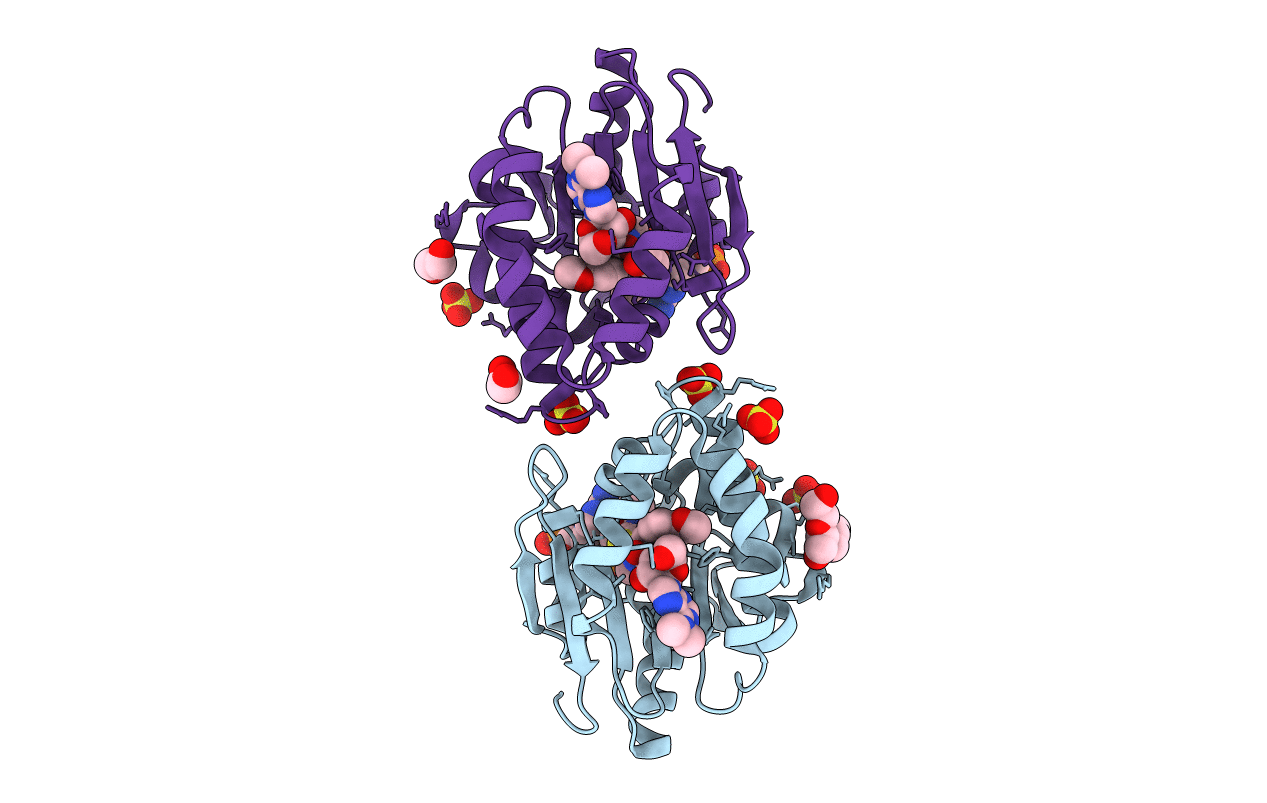
Deposition Date
2020-09-03
Release Date
2021-03-17
Last Version Date
2023-10-18
Entry Detail
PDB ID:
7K0A
Keywords:
Title:
Puromycin N-acetyltransferase in complex with acetylated puromycin and CoA
Biological Source:
Source Organism:
Streptomyces alboniger (Taxon ID: 132473)
Host Organism:
Method Details:
Experimental Method:
Resolution:
2.00 Å
R-Value Free:
0.24
R-Value Work:
0.20
Space Group:
I 1 2 1


